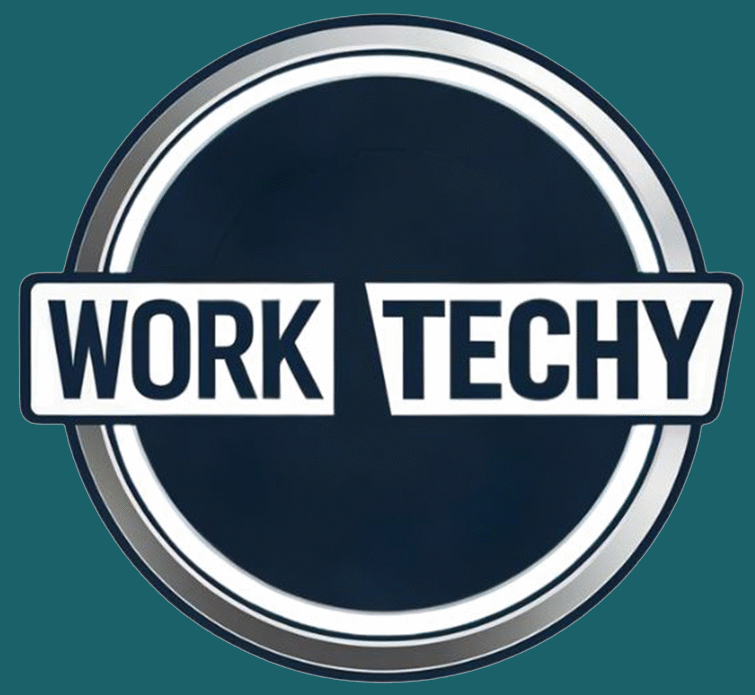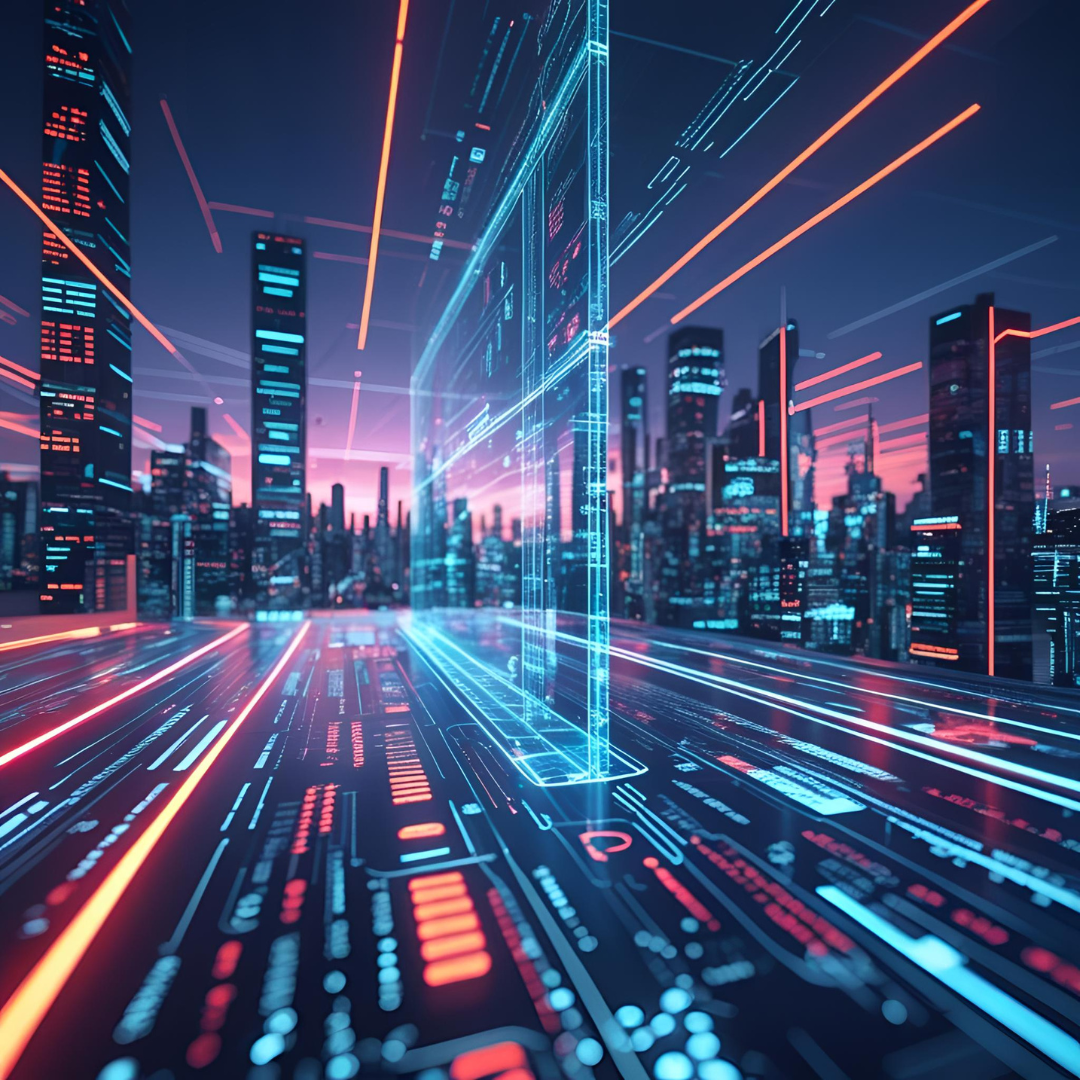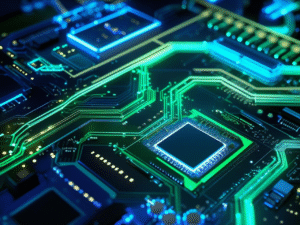Table of Contents
ToggleIntroduction
Technology has become the cornerstone of human civilization. From the invention of the wheel to the rise of artificial intelligence, every advancement has reshaped societies, economies, and lifestyles. Technology can be broadly defined as the application of scientific knowledge to solve practical problems, improve efficiency, and enhance the quality of life. In the 21st century, technological innovations are progressing at an unprecedented pace, influencing nearly every sector, including healthcare, education, business, communication, transportation, and entertainment.
This article explores the role of technology in modern society, its applications across different fields, and the opportunities and challenges it presents for the future.
Evolution of Technology
The story of technology is essentially the story of human progress. Early humans developed stone tools for hunting and fire for cooking. The invention of agriculture marked another technological leap that allowed humans to settle and form societies. The Industrial Revolution in the 18th and 19th centuries introduced machines, steam engines, and electricity, which transformed economies and social structures.
The 20th century witnessed extraordinary innovations such as automobiles, airplanes, computers, and the internet. Entering the 21st century, technology became digital, connected, and intelligent. Today, developments such as artificial intelligence (AI), robotics, biotechnology, and quantum computing are driving the so-called Fourth Industrial Revolution.
Applications of Technology in Different Fields
Education
Education has been revolutionized by technology in recent decades.
E-Learning Platforms: Websites and apps like Coursera, Udemy, and Khan Academy provide online courses to millions worldwide.
Virtual Classrooms: Tools like Zoom, Microsoft Teams, and Google Meet enable distance learning.
Smart Classrooms: Interactive whiteboards, tablets, and projectors make learning more engaging.
Artificial Intelligence in Education: Personalized learning platforms use AI to adapt content to the learning style of students.
Virtual Reality (VR) and Augmented Reality (AR): These technologies provide immersive learning experiences in fields like history, medicine, and engineering.
Technology in education bridges geographical gaps, promotes inclusive learning, and provides access to resources globally.
Communication
Communication has been one of the most impacted areas of technological progress.
Internet and Social Media: Platforms like WhatsApp, Facebook, Instagram, and Twitter connect people globally in real time.
Video Conferencing: Tools such as Zoom and Google Meet have made remote work and virtual meetings commonplace.
Email and Messaging Apps: Fast and reliable communication tools have replaced traditional letters.
5G Networks: High-speed connectivity is making real-time collaboration, streaming, and communication seamless.
Technology has made communication faster, cheaper, and more effective, though it also raises concerns about misinformation and privacy.
Business and Industry
Businesses across the world have transformed due to technology.
Automation: Robotics and AI have automated repetitive tasks, improving efficiency.
E-Commerce: Platforms like Amazon, Flipkart, and Alibaba have revolutionized shopping by providing goods at the click of a button.
Digital Payments: Mobile wallets and online banking have made transactions faster and more secure.
Data Analytics: Big Data technologies allow businesses to analyze customer behavior and improve decision-making.
Remote Work Tools: Cloud-based services and collaboration software have enabled work-from-home models.
Technology increases productivity and opens new markets, but automation may displace some traditional jobs.
Transportation
Transportation is another vital sector where technology plays a key role.
Automobiles: Modern vehicles include GPS navigation, driver-assistance systems, and electric engines.
Electric and Autonomous Vehicles: Companies like Tesla are pioneering electric cars, while Google’s Waymo is developing self-driving cars.
Air Travel: Advanced aircraft designs and booking systems make flying faster and more efficient.
Railway Systems: High-speed trains powered by magnetic levitation are reducing travel times significantly.
Logistics and Supply Chain: Technologies like GPS and blockchain are making supply chains more transparent and efficient.
These innovations reduce human effort, save time, and contribute to sustainability goals.
Entertainment and Media
Entertainment has been reshaped by technology, providing limitless content and interactivity.
Streaming Platforms: Services like Netflix, YouTube, and Spotify provide on-demand movies, shows, and music.
Gaming: Virtual reality (VR), augmented reality (AR), and advanced consoles have made gaming more immersive.
Digital Media Production: Sophisticated software enables filmmakers and musicians to create high-quality content.
Social Media Content: Platforms like TikTok and Instagram have democratized content creation.
Technology has made entertainment accessible globally, but concerns over screen addiction and content regulation persist.
Agriculture
Agriculture, one of the oldest human activities, has greatly benefited from technological innovations.
Smart Farming: Drones, sensors, and IoT devices monitor soil, weather, and crops.
Precision Agriculture: Farmers can optimize irrigation, fertilization, and pesticide use to increase yields.
Genetically Modified Crops: Biotechnology has developed crops resistant to pests and environmental stresses.
Agricultural Robots: Machines for planting, harvesting, and monitoring reduce human labor requirements.
Technology enhances food production, ensures sustainability, and addresses global hunger challenges.
Emerging Technologies
Some of the most significant emerging technologies shaping the future include:
Artificial Intelligence (AI): AI powers voice assistants, autonomous vehicles, and predictive analytics.
Blockchain: A decentralized ledger technology that ensures security in banking, supply chains, and healthcare.
Quantum Computing: Promises exponential processing power for solving complex problems.
Internet of Things (IoT): Connecting everyday devices like refrigerators, thermostats, and vehicles to the internet.
Green Technologies: Renewable energy, electric vehicles, and carbon capture technologies promote sustainability.
Advantages of Technology
Increased efficiency and productivity.Improved healthcare and longer life expectancy.
Greater connectivity and communication.
Access to vast amounts of information.
Enhanced learning opportunities.
Better transportation and logistics.
Innovative entertainment and cultural exchange.
Solutions for global challenges like climate change and food security.
Challenges and Concerns
While technology offers enormous benefits, it also poses challenges.
Job Displacement: Automation and AI may replace traditional human jobs.
Privacy Issues: Personal data is often collected without consent.
Cybersecurity Threats: Hacking and data breaches are increasing.
Digital Divide: Not all people have equal access to technology.
Addiction and Mental Health Issues: Excessive use of digital devices affects well-being.
Environmental Impact: E-waste and high energy consumption harm the planet.
Future of Technology
The future of technology promises even greater transformations. We can expect advancements in AI, space exploration, biotechnology, and clean energy. Human life may become more interconnected with digital systems through wearable devices, brain-computer interfaces, and smart cities. At the same time, ethical frameworks, regulations, and responsible usage will be critical to ensuring that technology benefits all of humanity without causing harm.
Conclusion
Technology is an inseparable part of modern life. Its applications extend across healthcare, education, business, communication, transportation, entertainment, agriculture, and defense. Emerging innovations such as AI, blockchain, and green technology will shape the future, bringing both opportunities and challenges.
Ultimately, the impact of technology depends on how it is used. If harnessed responsibly, it has the potential to solve some of humanity’s most pressing problems and create a better, more sustainable world.



